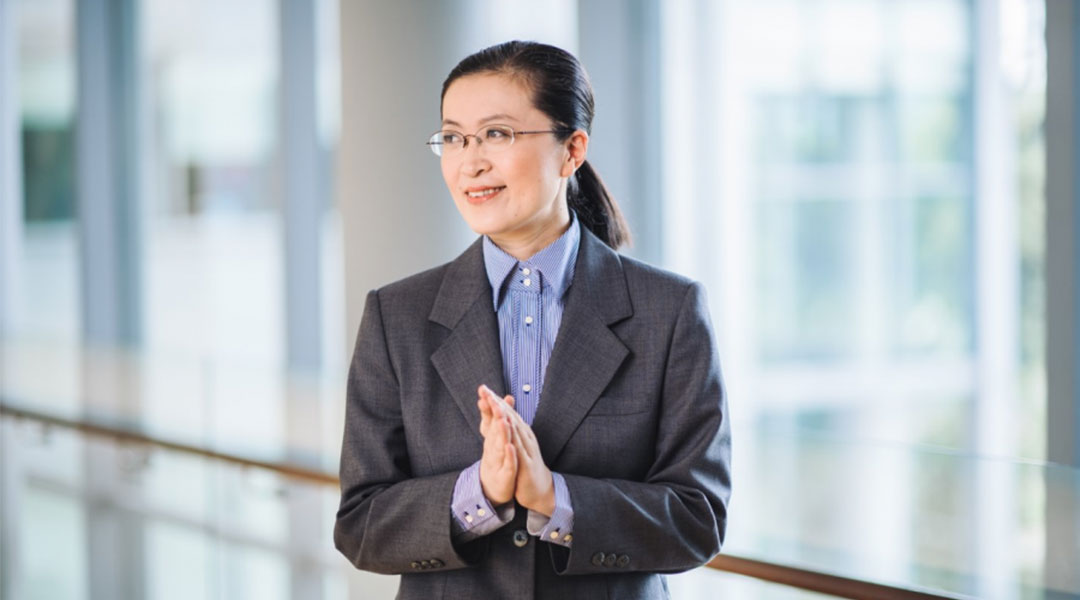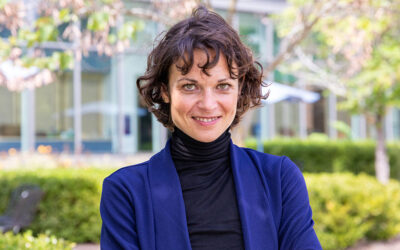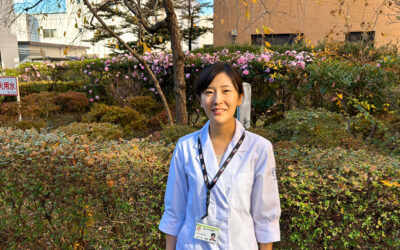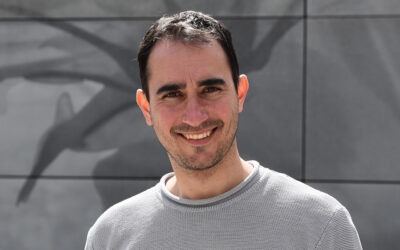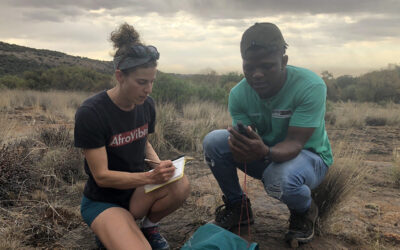Well known for her contributions to polymer chemistry and organic nanomaterials, Bin Liu has had a dazzling career in the field of organic functional materials. As head of the Department of Chemical and Biomolecular Engineering and Vice President of Research and Technology at the National University of Singapore, she is pushing through innovative ideas to simultaneously solve environmental and energy challenges, while also nurturing a multi-disciplinary research program that will help propel materials science forward.
Why did you decide to pursue a career in science?
My father studied arts and social sciences with a major in French, but had the impression that science is a powerful tool. This wasn’t really my plan when I was young, but my parents suggested that I go that way and so I did.
Still, I guess it might have been obvious that you showed talent for science?
Yes, I showed talent, similar to other good kids at school. I did well every year and then went off to college and just carried on.
Did you ever have any moments during your research where you thought you might give up? If so, how did you manage to push through?
I did have a period of frustration when I was doing my Ph.D. I was trained as an organic chemist in China, and when I came to Singapore, I started to do polymer research. Even though polymer and organic chemistry are related fields, there are certain differences between them that I wasn’t able to manage at that time.
I spent one year trying but I couldn’t successfully make any polymers. At that time, modeling-guided design was very rare, so it was just trial and error. It was frustrating because I didn’t even know what to try or what I was doing wrong so that there were no successes for the whole year. I lost sleep for few weeks and I thought about quitting for months, but I managed to convince myself that I couldn’t because I did not want to disappoint my parents.
So, I continued trying, and struggled for a couple more months when suddenly — at the time didn’t know how — but one day [my synthesis] worked! And from that day onward, everything worked. All the mistakes that I had made helped me to grow.
So now when I look back, that experience has taught me to be patient with problems. This personal experience also influences the way I train my own Ph.D. students. I try to be patient and understanding because I know that they could easily find themselves in similar situations. I try to make sure that if they have any problem, they will not keep it to themselves for too long.
You are head of the Department of Chemical and Biomolecular Engineering and Vice President of research and technology at NUS. How did you establish yourself so well?
I do well in research, I really love doing it. In addition, I also did a lot of consultation and provided support for students and colleagues at NUS, making sure that they are healthy and happy [outside of just research endeavors], especially during the pandemic.
I’m very fortunate that I have very strong support not only from my family but equally important (or probably even more important) from my colleagues, the NUS system and senior management. I am also inspired by my colleagues to perform better every day.
Do you feel that women are well represented within your field in general?
I really don’t see a difference between [the capabilities] of men and women. I do equally well when compared to my colleagues. The engineering faculty is always dominated by males in Asia, the United States, and almost everywhere else in the world. Because of the low percentages of females, there are a lot of outreach events in Singapore, trying to encourage more female high school students to look into more science and engineering options in college.
What would you say has been your most impactful contribution to the field?
I think [my group] has done quite a few unique things and we do well in both fundamental and translational research.
My general philosophy is that basic research is fundamental but must have the goal of solving a particularly important societal problem, such as treating a disease or solving energy problems. Finding a unique solution to a challenging problem gives us the opportunity to do basic research and create translational value at the same time.
In terms of the science itself, I didn’t follow a traditional research path. From the very beginning, we went into a cross-section of multiple disciplines. I crossed chemistry and biology a long time ago.
A lot of people design materials for organic electronics, but many of these materials are only soluble in organic solvents, which creates a problem for multi-layer device fabrication as the subsequent layer will dissolve the previous layer due to similar solubility.
We therefore developed organic functional materials with aqueous or alcohol-solubility. From there, we gradually moved to nanomaterials dispersible in water, which we can link to biological applications, in addition to light-emitting devices.
As we always create new research directions that are relatively under-explored, we have very few competitors. I think that’s why we’ve been able to grow so quickly.
What is an exciting project you’re currently working on?
During the pandemic, access to our lab has been interrupted. Therefore, we started to work with our colleagues on using machine learning for materials design. Within less than a year, we had screened more than seven million compounds and came out with [numerous] recommended structures for laboratory synthesis and property tests. It worked very well, and we are quite fascinated with the impact of machine learning in accelerating materials innovation. This will make us much more productive despite the [challenges of the] pandemic.
Do you plan to make this an open source platform?
Yes, that’s how we would like to serve the community. Through training, our machine learning models can build up the structure-property relationship and thus implement fast prediction of optical properties for molecules, such as aggregation-caused quenching or aggregation-induced emission, which will also help us design new molecules with desirable properties.
When the prediction reaches 95% accuracy, we will be able to publish the code and share the method with everybody. We hope that other researchers could test the method and feedback to us. In this way, we can help each other and grow the database, and eventually further increase the accuracy of prediction. I strongly believe that machine learning will accelerate and push materials science forward.
Could you briefly comment on the topic discussed in your Advanced Energy Materials essay on conjugated polymer nanomaterials?
Solar-driven water splitting represents an exciting research topic where radiant solar energy is converted to clean green fuels. Our essay discusses the key features of conducting polymer photocatalysts in water-splitting and advances in dual-functional photocatalysis for simultaneous hydrogen production and photocatalytic oxidation of organic substances. Recently, organic semiconductor-based photocatalytic water splitting has also attracted attention for biological applications, such as H2/O2 cancer therapy.
There has also been a heated discussion around hydrogen economy, in which hydrogen is used as an energy carrier to eliminate carbon emissions. There are many problems to be solved and making green hydrogen economically viable is one of the key issues. When we conduct research, cost should also be an important factor to consider.
What are your interests outside of the lab? Do you think a work-life balance is important or even attainable in your line of work?
My experiences may not be a typical example. I have a smooth career with super strong support from my family, colleagues, and the university management team, so that everything goes on well. This mommy can do everything does not mean I am a super mommy, but because of many hidden heroes behind.
I used to fish when I was at UC Santa Barbara. I enjoyed fishing and just thinking — this is something I really love to do. However, I don’t have much time for myself now because there are so many exciting things on-going at NUS and in my own research group. Whenever I have any free time, I would spend it with my kids and parents.
I understand the importance of making people happy, which will eventually create a better and happier environment for everyone. My colleagues often tell me that things in my eyes are too rosy, but then I tell them, let’s work together to turn the dreams into reality. Then you understand that my rosy outlook is actually real, right?
You need to be optimistic, your own cheerleader, and then see what happens!
To learn more about Liu’s work and to read her essay on conjugated polymer nanomaterials for solar water splitting, read the paper published in Advanced Energy Materials, which is part of a recent Virtual Issue “10 Years of Advanced Energy Materials Research” celebrating the 10th anniversary of the journal.

